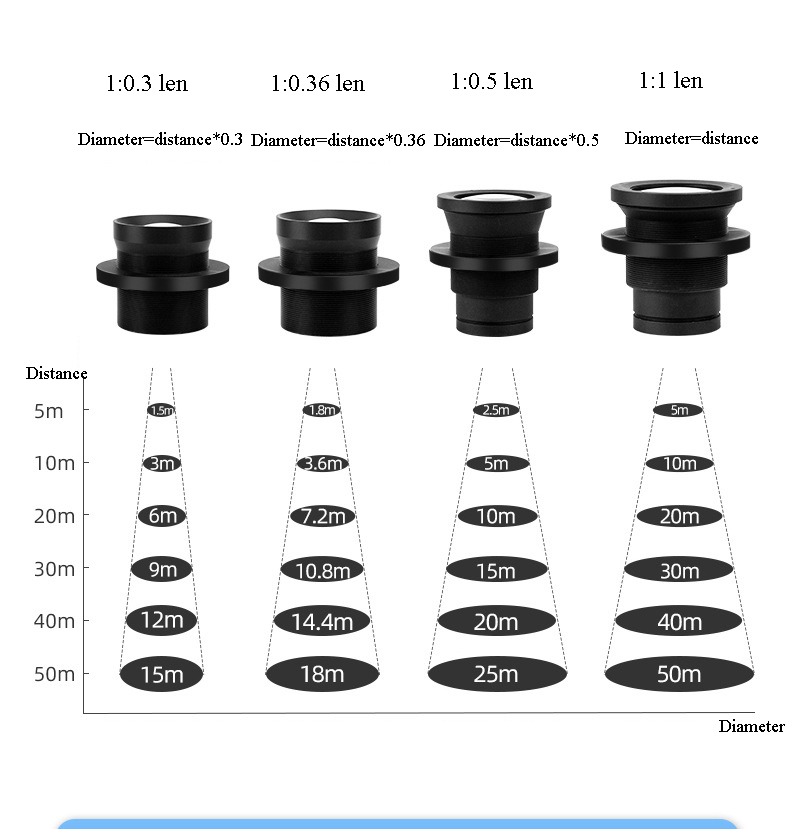How to Choose the Right Lens Angle and Power for Your Gobo Projection Lamp
Selecting the appropriate projection lamp is essential for achieving optimal image quality and effectiveness in advertising campaigns. Understanding lens angles and power requirements will help you make the best choice for your specific application.
Understanding Projection Lens Angles
The lens angle determines how your projected image will be distributed and at what distance it will remain clear and bright.
🔍 Narrow-Angle Lenses (15°-25°)
– Best for: Long-distance projection
– Characteristics: Creates brighter, more concentrated light ideal for situations where the projector must be placed far from the surface
– Typical use: Large venues, outdoor advertising, stadiums
🔍 Standard Angle Lenses (30°-45°)
– Best for: Medium-distance projection
– Characteristics: Balanced light distribution for most indoor applications
– Typical use: Retail stores, exhibitions, events
🔍 Wide-Angle Lenses (50°-60°)
– Best for: Short-distance projection
– Characteristics: Wider coverage area from closer distances
– Typical use: Small spaces, window displays, point-of-sale promotions

Selecting the Right Power for Your Needs
Projection lamp power directly affects brightness and visibility. Consider these factors when choosing wattage:
💡 Low Power (15W-35W)
– Ideal for: Dark environments, indoor use, short distances
– Coverage: Up to 3-5 meters effectively
– Energy efficiency: Lower power consumption
💡 Medium Power (50W-100W)
– Ideal for: Moderately lit areas, medium distances
– Coverage: Effective up to 10-15 meters
– Versatility: Suitable for most advertising applications
💡 High Power (150W+)
– Ideal for: Bright environments, long distances
– Coverage: Effective beyond 15 meters
– Visibility: Strong performance even in well-lit conditions
Key Selection Factors
1. Projection Distance: Measure the distance from your projector to the surface
2. Image Size: Determine how large you need your projected image to be
3. Ambient Light: Consider the lighting conditions where you’ll be projecting
4. Surface Color: Darker surfaces require more powerful projection
5. Content Type: Detailed graphics need higher brightness than simple text
Practical Tips
– For every meter of projection distance, add approximately 5-10W of power
– Wide-angle lenses work best when projection distance is limited
– Narrow-angle lenses maintain brightness over longer distances
– Always test your projection setup before final installation
At Guangzhou Yoijoys, we provide professional projection solutions tailored to your specific needs. Our experts can help you select the perfect combination of lens angle and power for your advertising requirements.
